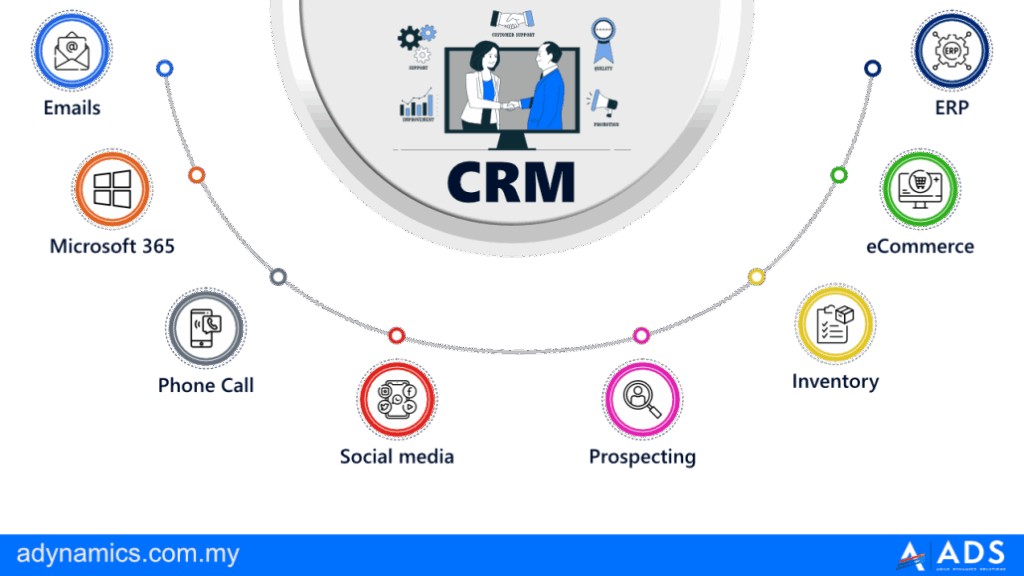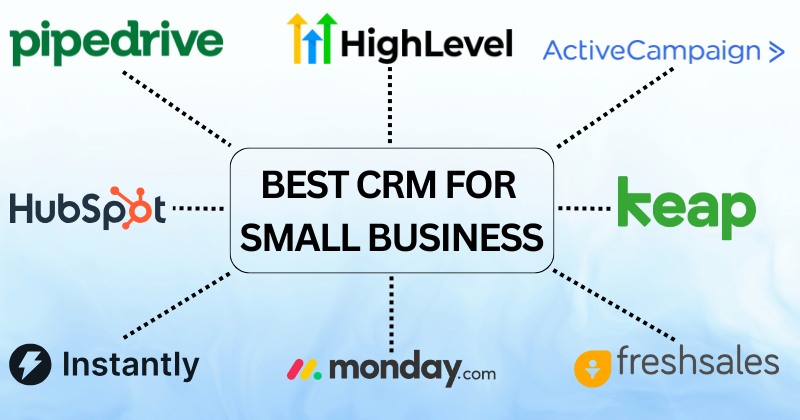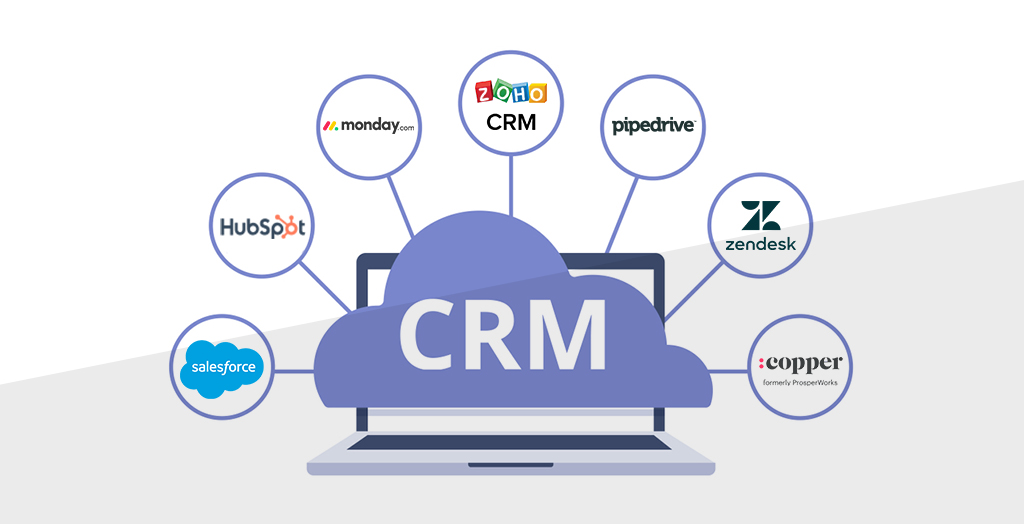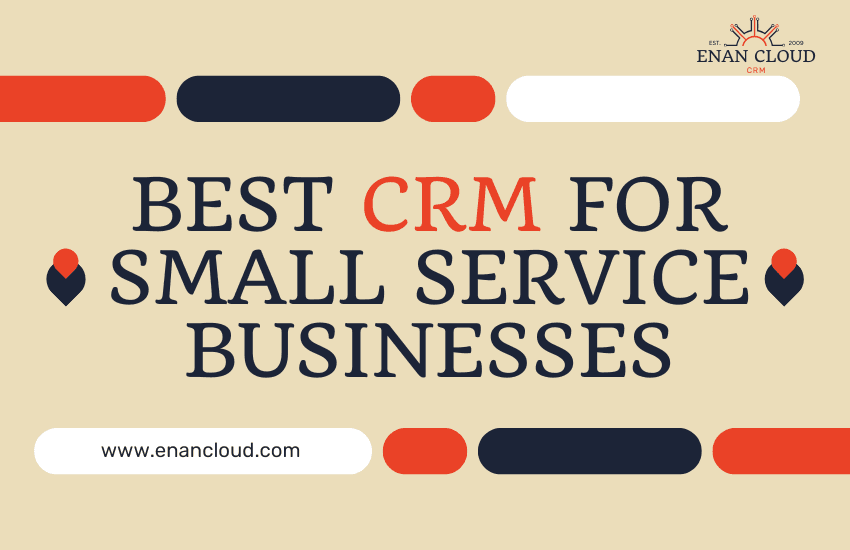
Seamless Synchronization: Mastering CRM Integration with Workamajig for Agency Success
In the dynamic world of agencies, juggling projects, clients, and resources can feel like herding cats. That’s where a robust Customer Relationship Management (CRM) system and a powerful project management tool like Workamajig come into play. But simply having these tools isn’t enough; the real magic happens when they work in harmony. This article delves deep into the crucial topic of CRM integration with Workamajig, exploring why it’s essential, how to do it effectively, and the remarkable benefits it unlocks for agencies of all sizes.
Why CRM Integration with Workamajig Matters
Think of your agency as a well-oiled machine. Each department – sales, marketing, project management, accounting – plays a vital role. Now, imagine these departments are siloed, operating in their own separate universes. Communication is fragmented, data is duplicated, and opportunities are missed. This is precisely the problem that CRM integration with Workamajig solves.
Here’s a breakdown of why this integration is a game-changer:
- Centralized Data: Eliminate data silos. Integrate your CRM with Workamajig and create a single source of truth for all client information, project details, and financial data.
- Improved Efficiency: Automate tedious tasks like data entry, proposal generation, and invoicing. Free up your team to focus on what matters most: delivering exceptional work and building client relationships.
- Enhanced Collaboration: Foster seamless communication and collaboration across departments. Everyone has access to the same information, reducing misunderstandings and delays.
- Data-Driven Decision Making: Gain valuable insights into your agency’s performance. Track key metrics, identify trends, and make informed decisions based on accurate, real-time data.
- Increased Client Satisfaction: Provide a more personalized and responsive client experience. Access client history, preferences, and project status instantly, enabling you to anticipate their needs and exceed their expectations.
- Boosted Profitability: Streamline operations, reduce errors, and optimize resource allocation, ultimately leading to increased profitability.
Understanding the Core Components: CRM and Workamajig
Before diving into the integration process, let’s briefly clarify the roles of each system:
Customer Relationship Management (CRM)
A CRM system is the central hub for managing all your interactions with current and potential clients. It’s where you store contact information, track communication, manage sales pipelines, and analyze customer data. Popular CRM platforms include:
- Salesforce
- HubSpot
- Zoho CRM
- Pipedrive
- Insightly
The primary functions of a CRM include:
- Contact Management: Store and organize contact information, including names, titles, email addresses, phone numbers, and social media profiles.
- Lead Management: Track leads through the sales pipeline, from initial contact to qualified opportunity to closed deal.
- Sales Automation: Automate repetitive sales tasks, such as sending follow-up emails, scheduling appointments, and generating reports.
- Sales Reporting and Analytics: Generate reports on sales performance, track key metrics, and gain insights into your sales process.
- Marketing Automation: Integrate with marketing tools to automate email campaigns, nurture leads, and track marketing ROI.
Workamajig
Workamajig is a comprehensive project management software designed specifically for creative agencies. It helps you manage projects from start to finish, including:
- Project Planning: Define project scope, create timelines, and allocate resources.
- Resource Management: Track employee availability, manage workloads, and optimize resource allocation.
- Time Tracking: Track employee time spent on projects, tasks, and activities.
- Expense Tracking: Manage project expenses, including vendor invoices and employee reimbursements.
- Billing and Invoicing: Generate invoices, track payments, and manage client billing.
- Reporting and Analytics: Generate reports on project performance, profitability, and resource utilization.
Step-by-Step Guide to CRM Integration with Workamajig
The specific steps for integrating your CRM with Workamajig will vary depending on the CRM platform you’re using. However, the general process remains consistent. Here’s a comprehensive guide:
1. Planning and Preparation
Before you begin, take the time to plan your integration strategy. This includes:
- Defining Your Goals: What do you want to achieve with the integration? Identify specific objectives, such as automating data entry, improving sales forecasting, or streamlining project initiation.
- Mapping Data Fields: Determine which data fields from your CRM will be synced with Workamajig. This might include client names, contact information, project budgets, and project status.
- Choosing an Integration Method: Decide how you’ll connect your CRM and Workamajig. You can use a native integration, a third-party integration platform, or custom development.
- Identifying Key Users: Determine who will be responsible for managing the integration and training other users.
- Data Cleanup: Ensure your CRM and Workamajig data are clean and accurate before you begin the integration. This will prevent errors and ensure data consistency.
2. Choosing the Right Integration Method
There are several ways to integrate your CRM with Workamajig:
- Native Integrations: Some CRM platforms and Workamajig offer native integrations. These are often the easiest to set up and maintain. Check the Workamajig marketplace or your CRM provider’s documentation to see if a native integration is available.
- Third-Party Integration Platforms: Platforms like Zapier, Automate.io, and Integromat (now Make) allow you to connect different applications without coding. These platforms offer pre-built integrations for many popular CRM and project management tools.
- Custom Development: If you have specific integration requirements that aren’t met by native or third-party integrations, you can hire a developer to build a custom integration. This option offers the most flexibility but can also be the most expensive and time-consuming.
Consider the following factors when choosing an integration method:
- Complexity: How complex are your integration requirements? Do you need to sync a large amount of data or perform complex data transformations?
- Budget: How much are you willing to spend on the integration? Native integrations are usually the most affordable, while custom development is the most expensive.
- Technical Expertise: Do you have the technical expertise to set up and maintain the integration? Native integrations and third-party platforms are generally easier to use than custom development.
- Scalability: Will the integration be able to handle your future needs as your agency grows?
3. Setting Up the Integration
Once you’ve chosen your integration method, it’s time to set it up. The specific steps will vary depending on the method you’ve chosen, but here’s a general overview:
- Connect Your Accounts: Connect your CRM and Workamajig accounts to the integration platform or through the native integration.
- Map Data Fields: Map the data fields from your CRM to the corresponding fields in Workamajig. This ensures that data is synced correctly.
- Configure Triggers and Actions: Define the triggers and actions that will initiate the data synchronization. For example, you might want to create a new project in Workamajig automatically when a new deal is closed in your CRM.
- Test the Integration: Thoroughly test the integration to ensure that data is syncing correctly and that the integration is working as expected.
- Monitor and Maintain: Regularly monitor the integration to ensure that it’s working properly. Make any necessary adjustments or updates as needed.
4. Training and Adoption
Once the integration is set up, it’s crucial to train your team on how to use it effectively. This includes:
- Providing Clear Documentation: Create clear and concise documentation that explains how to use the integration.
- Offering Training Sessions: Conduct training sessions to teach your team how to use the integration and answer any questions they may have.
- Encouraging Adoption: Encourage your team to use the integration and provide support as needed.
- Gathering Feedback: Gather feedback from your team to identify any areas for improvement.
Key Benefits of CRM Integration with Workamajig
The advantages of a well-executed CRM and Workamajig integration are numerous and far-reaching. Here are some of the most significant benefits:
1. Streamlined Sales and Project Hand-off
Imagine a seamless transition from sales to project execution. With integrated systems, once a deal is closed in your CRM, a new project can be automatically created in Workamajig. Client information, budget details, and key contacts are instantly available to the project team. This eliminates manual data entry, reduces errors, and ensures that projects get off to a running start.
2. Improved Project Visibility and Tracking
Integration provides a unified view of all client-related activities. Project managers can easily access client history, communication logs, and sales information within Workamajig. This allows them to understand the client’s needs, anticipate potential challenges, and proactively manage project timelines and budgets. Real-time data synchronization ensures that everyone is always on the same page.
3. Enhanced Client Relationship Management
By connecting your CRM and Workamajig, you gain a 360-degree view of your client relationships. The sales team can access project progress and financial data, while the project team can access sales communications and client preferences. This level of visibility allows you to provide a more personalized and responsive service, fostering stronger client relationships and increasing client retention.
4. Accurate Financial Tracking and Reporting
Integration simplifies financial tracking and reporting. When sales data is synced with Workamajig, project budgets, actual costs, and revenue projections are automatically updated. This allows you to track project profitability in real time, identify potential issues early on, and make informed financial decisions. You can also generate comprehensive reports that provide a clear picture of your agency’s financial performance.
5. Optimized Resource Allocation
With integrated systems, you can optimize resource allocation. By tracking project progress, resource utilization, and employee availability, you can ensure that your team is working efficiently and that your resources are being used effectively. This can lead to reduced costs, improved project delivery times, and increased profitability.
6. Enhanced Communication and Collaboration
Integration promotes better communication and collaboration across departments. Sales, marketing, and project teams can all access the same client information, project details, and financial data. This eliminates the need for constant back-and-forth communication and ensures that everyone is working towards the same goals. Integrated systems can also improve internal communication, reducing misunderstandings and delays.
Best Practices for Successful Integration
While the benefits of CRM integration with Workamajig are clear, success requires careful planning and execution. Here are some best practices to keep in mind:
- Start Small: Don’t try to integrate everything at once. Start with a few key data fields and processes, and gradually expand the integration as you become more comfortable.
- Involve Stakeholders: Involve representatives from all relevant departments in the planning and implementation process. This will ensure that the integration meets everyone’s needs.
- Test Thoroughly: Before launching the integration, test it thoroughly to ensure that data is syncing correctly and that the integration is working as expected.
- Provide Training: Train your team on how to use the integration and provide ongoing support.
- Monitor and Maintain: Regularly monitor the integration to ensure that it’s working properly. Make any necessary adjustments or updates as needed.
- Prioritize Data Accuracy: Ensure that your CRM and Workamajig data are clean and accurate before you begin the integration. This will prevent errors and ensure data consistency.
- Choose the Right Integration Platform: Select an integration platform that meets your specific needs and budget. Consider factors such as ease of use, features, and scalability.
- Document Everything: Create clear and concise documentation that explains how to use the integration. This will help your team understand how to use the system.
- Seek Expert Advice: If you’re unsure how to proceed, consider seeking advice from an experienced integration specialist.
- Review and Refine: Regularly review and refine your integration to ensure that it’s meeting your needs and that you’re getting the most out of your systems.
Troubleshooting Common Integration Challenges
Even with careful planning, you may encounter some challenges during the integration process. Here are some common issues and how to address them:
- Data Mismatches: Ensure that data fields are mapped correctly between your CRM and Workamajig. Double-check data formats and units of measurement.
- Synchronization Delays: If data is not syncing in real time, check the integration settings and ensure that the synchronization frequency is appropriate.
- Errors and Bugs: If you encounter errors, review the error logs and troubleshoot the issue. Contact the integration platform’s support team for assistance.
- User Adoption Issues: If your team is not using the integration, provide more training and support. Address any concerns or questions they may have.
- Performance Issues: If the integration is slowing down your systems, optimize the integration settings and ensure that your systems have sufficient resources.
- Data Duplication: If you’re seeing duplicate data, review the integration settings and ensure that data is not being synced multiple times.
Real-World Examples of Successful CRM Integration with Workamajig
To illustrate the transformative power of CRM integration with Workamajig, let’s look at some real-world examples:
- Agency A: An advertising agency struggling with fragmented data and inefficient workflows. By integrating their CRM with Workamajig, they automated data entry, streamlined the sales-to-project hand-off, and gained real-time visibility into project profitability. This resulted in a 20% increase in project profitability and a 15% reduction in project delivery times.
- Agency B: A digital marketing agency looking to improve client communication and collaboration. By integrating their CRM with Workamajig, they provided their sales team with access to project progress and financial data, and their project team with access to sales communications and client preferences. This led to a 25% increase in client satisfaction and a 10% increase in client retention.
- Agency C: A creative agency seeking to optimize resource allocation and improve financial tracking. By integrating their CRM with Workamajig, they gained real-time visibility into resource utilization and project costs. This resulted in a 10% reduction in overhead costs and a 5% increase in overall profitability.
These examples demonstrate the potential of CRM integration with Workamajig to transform agency operations and drive significant business results. The key is to carefully plan the integration, choose the right integration method, and provide ongoing training and support.
The Future of Integration: Staying Ahead of the Curve
The landscape of CRM and project management software is constantly evolving. As technology advances, new integration capabilities and features are emerging. To stay ahead of the curve, agencies should:
- Stay Informed: Keep abreast of the latest trends and developments in CRM and project management software.
- Explore New Integration Options: Investigate new integration options and features that can enhance your agency’s capabilities.
- Embrace Automation: Leverage automation to streamline workflows and free up your team to focus on strategic initiatives.
- Prioritize Data-Driven Decision Making: Use data and analytics to make informed decisions and optimize your agency’s performance.
- Continuously Improve: Regularly review and refine your integration strategy to ensure that it’s meeting your evolving needs.
By staying informed, exploring new integration options, and embracing automation, agencies can position themselves for long-term success in the competitive landscape.
Conclusion: Unlock Agency Potential Through Seamless Integration
CRM integration with Workamajig is more than just a technical undertaking; it’s a strategic investment in your agency’s future. By connecting these powerful tools, you can eliminate data silos, improve efficiency, enhance collaboration, and make data-driven decisions. The benefits are clear: increased client satisfaction, improved profitability, and a more streamlined and productive agency. Embrace the power of integration, and unlock the full potential of your agency.


